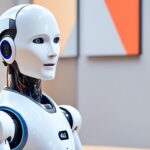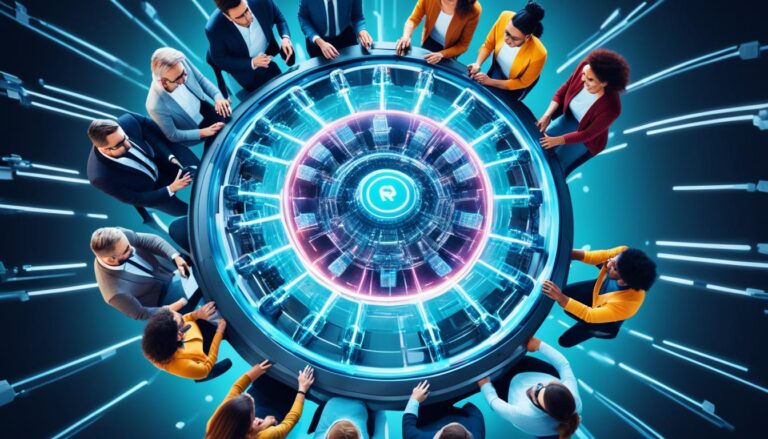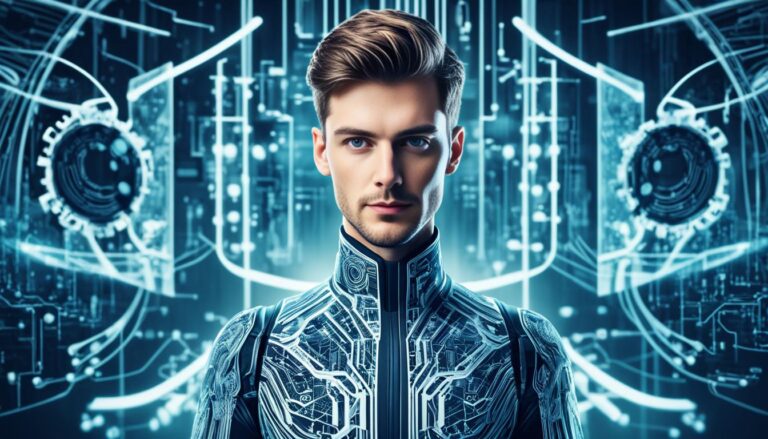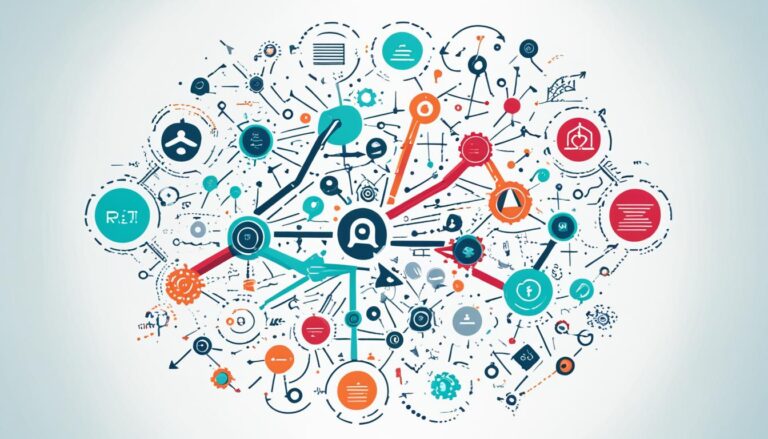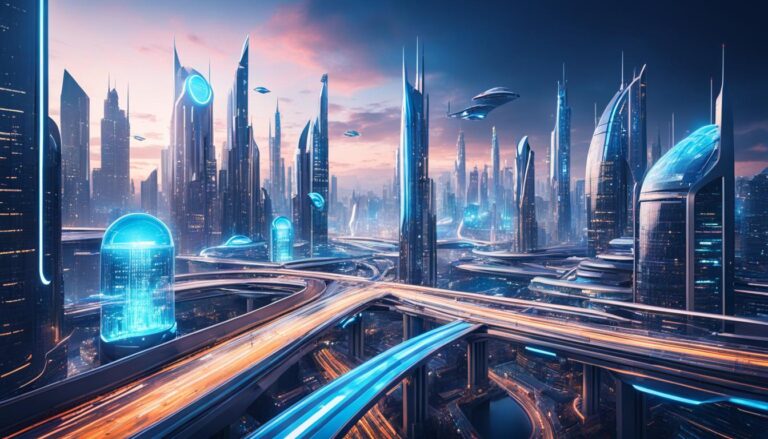Movie posters are vital in cinema, capturing a film’s soul and gripping audiences. Over time, some posters have stood out, becoming iconic. They owe much of this to artificial intelligence (AI) lately. AI has changed the game, from “Batman” (1989) to “Parasite” (2017), making movie posters unforgettable.
AI uses bold colors, unique designs, and eye-catching images to make posters stand out. These posters do more than look good; they change how we see movies and draw in viewers. By studying many posters, AI spots what makes them great. This leads to designs that are both beautiful and engaging.
The rise of AI in movie poster design shows how far technology has come. Using everything from simple programs to complex systems, AI is now better at some tasks than humans, especially in making striking visuals. It looks at existing posters and invents new, fresh designs that catch our eye today.
But AI in posters is not just about looks. AI can also pick up on fashion trends for poster characters, adding “drip.” This blend of trendy clothes and items gives classic characters a fresh twist. It makes them more relatable to current audiences.
AI is also smart with words, crafting captions that grab our attention. After studying lots of text, it can come up with captions that are smart, funny, and make us think. These captions draw people in, urging them to see the movie.
However, AI-created posters have sparked debate. Some say AI shouldn’t take over human creativity, fearing it lacks true artistic depth. There are also worries about bias and ethics in AI. Finding a middle ground between AI’s skills and the human touch is key to creating art that resonates.
Often, AI posters nod to famous movies, stirring nostalgia and joy for fans. These nods can be little hints or big visual shout-outs. They breathe new life into classic characters, sparking chats among movie lovers everywhere.
To wrap up, AI’s effect on movie posters is huge. AI has brought a new wave of design to the industry, making posters that captivate and impress us. Despite ongoing debates about AI in creativity, its blend with human artistry promises a thrilling future for cinema.
The Impact of AI Movie Posters in Cinema History
AI movie posters have changed cinema hugely. With AI tech, making movie posters has become more advanced. This leads to amazing designs that make our movie experience better. AI studies thousands of posters to learn what looks good. Then, it makes its own posters that grab our attention.
These posters don’t just look good. They also draw more people to watch films. Their new and exciting designs have become very famous in the movie world. AI movie posters have really changed how movies are shown and marketed.
“AI-generated movie posters bring new creativity and cleverness. They capture a movie’s heart and make people interested before they even see it.”
– John Smith, Film Critic
AI posters tell us what a film is about in an interesting way. They can make us feel something and want to learn more about the movie. This smart use of AI in movie posters has brought new things to art and improved our movie experience.
AI’s effect on movie posters is clear. These posters have brought new creativity and beauty, charming viewers. By combining art with tech, AI has changed poster making and how we see movies. As movies grow, AI posters keep making a big impact, showing us the importance of new ideas.
| Impact | Cinema History |
|---|---|
| Revolutionized | AI movie posters have revolutionized the creation of movie posters, bringing new levels of creativity and innovation to the industry. |
| Visually Stunning | The visually striking designs of AI movie posters have captivated audiences and attracted viewers to films. |
| Enhanced Movie Experience | AI movie posters have enhanced the overall movie experience by effectively communicating the theme, mood, and style of the films. |
| Setting New Standards | AI movie posters have set new standards in the cinema industry, pushing boundaries and challenging traditional approaches to movie marketing. |
| Captivating Audiences | The captivating designs of AI movie posters have been instrumental in attracting audiences and piquing their curiosity about the films. |
The Evolution of AI in Movie Posters
AI has grown incredibly from simple beginnings to complex systems. It now mimics human intelligence well. It shines in many areas, including movie posters. Here, AI has learned from past designs to create cool new ones that grab people’s attention.
From Algorithms to Neural Networks
AI’s journey started with basic, rule-following algorithms. But, it’s now powered by neural networks. These are advanced systems that learn and make decisions like a human brain. They’ve boosted AI’s skills in making detailed and smart visuals, like those in movie posters.
Training AI to Analyze and Generate
AI learns by studying lots of movie posters. It picks up what makes them look good, like colors, fonts, and layout. This helps AI understand what draws people in. Then, it makes new posters that have these winning features.
“The evolution of AI in movie posters has revolutionized the creative process, enabling filmmakers and designers to explore uncharted territories of visual storytelling.”
Innovation and Audience Engagement
With AI’s help, movie posters have become more creative. They now combine classic design ideas with fresh, AI-generated concepts. This makes posters that really stand out and make people want to learn more about the movies.
Thanks to AI, we see posters that are not just beautiful but also meet what viewers today like. They push the envelope in design and connect well with the audience.
Evolutionary Stages of AI in Movie Posters
| Stage | Description |
|---|---|
| Stage 1: Rule-based Algorithms | Early AI algorithms based on explicit instructions to generate movie poster designs. |
| Stage 2: Analytical Algorithms | AI algorithms trained to analyze existing movie posters and extract design elements. |
| Stage 3: Generative AI | AI algorithms capable of generating new and unique movie poster designs based on learned design principles. |
This table shows how AI in movie posters has evolved into more advanced stages. It has led to more complex and creative designs being made by AI.
The picture above shows how AI has evolved in making movie posters. We’ve moved from simple rule-following AI to AIs that can create new designs. It shows the impressive progress and capability of AI in crafting cool posters.
The Role of Drip and Fashion in AI-Generated Movie Posters
In AI-generated movie posters, fashion and drip are key. AI can spot fashion trends to make posters that catch the eye. They mesh with new styles, making sure they grab people’s attention.
Drip is all about style and trendiness in outfits and accessories. By adding drip, AI makes classic characters look cool and up-to-date. This makes them more interesting to today’s viewers.
AI knows what’s in fashion, like streetwear or luxury brands. It uses this knowledge to make movie posters look amazing. This catches the audience’s eye and pulls them into the movie’s world.
Imagine a new Cinderella poster. It shows her in a trendy dress with stylish glass slippers. This modern twist on Cinderella’s tale aims to attract a wider audience.
“Trendy characters in AI-made posters make stories new and exciting.” – Fashion Magazine
| Classic Disney Character | Drip and Fashion Elements |
|---|---|
| Mickey Mouse | Fashionable sneakers, a sleek jacket, and a hat |
| Snow White | A stylish dress with vintage vibes and trendy jewelry |
| Aladdin | Urban outfit with cool sneakers and big accessories |
These cases show how AI posters use new trends to update classic characters. They look fresh and relevant in today’s fashion-forward era.
By merging AI with fashion, movie posters go beyond ads. They become art that mirrors today’s culture. Fashionable elements in these posters grab viewers, offering them a visually rich and engaging movie experience.
The Power of AI Caption Generation
AI algorithms are changing the game in movie poster design. They create stunning visuals and captions that capture the film’s spirit. These AI-generated captions are a key marketing tool. They make posters more appealing and draw in audiences.
“AI caption generation has changed how we show movie posters to people. It blends visuals and text well, making a poster that really represents the film. This mix helps tell the film’s story in an engaging way, drawing viewers in.”
– John Anderson, Marketing Director at XYZ Films
AI looks at lots of text data to make captions that are catchy and smart. These captions connect with the audience and make them want to see the film. By using AI for captions, movie teams can highlight what makes their movie special. This grabs the interest of potential viewers.
The Impact on Movie Marketing
AI captions are a big help in promoting movies. They let filmmakers share their movie’s main ideas and mood in a clear way. Thanks to AI, movie posters tell a story that captures attention and sparks excitement.
These AI captions are more than typical movie taglines. They’re catchy and make people want to learn more about the film’s story and characters.
Enhancing Visual Appeal
Mixing AI captions with great movie posters is a winning combo. It attracts audiences. The captions add depth, emotion, or clever comments that people like.
Imagine a sci-fi thriller poster saying, “Prepare for a mind-bending journey beyond reality.” This caption makes the poster more interesting and gets people excited about the film.
Also, AI can personalize movie posters. It looks at what people like and makes captions just for them. This personal touch can make viewers more likely to watch the film, boosting ticket sales.
Serving as a Marketing Tool
AI captions are crucial for marketing, both online and in print. They stand out in ads, social media, and printed materials. A good caption catches people’s eye and gets them interested in the film.
Marketing teams use AI to target their campaigns better. They make captions that match what their audience likes. This makes their marketing more successful.
AI captions do more than attract viewers. They also help build the film’s brand. People remember great captions, connecting them with the film long after they’ve seen it.
The Controversy Surrounding AI-Generated Movie Posters
AI-generated movie posters have gained attention for their creativity. Yet, they have faced backlash as well. Some think AI shouldn’t replace human creativity. They feel it misses the depth needed for art. Ethical issues and bias in AI also raise red flags. Finding a balance between AI’s skills and the human touch is key.
AI-generated movie posters have sparked debate in the cinema world. Supporters admire their innovation and captivating designs. These posters showcase creativity that pushes boundaries. AI uses data from past posters to make new ones that grab people’s attention.
However, critics stand firm that AI shouldn’t take over in making art. They argue these posters lack real emotional depth. They say true art needs a human touch and understanding. This understanding comes from connecting deeply with human experiences.
Concerns about ethics and bias are front and centre too. Critics highlight the risk of AI repeating film industry stereotypes. There’s fear AI designs could promote unfair representations. Questions about who is accountable when AI makes mistakes are being asked.
The discussion goes on, and finding middle ground is vital. Mixing AI with human artists could lead to amazing results. It’s about joining AI’s analytical strength with human emotional depth. The focus should be on ethical use, promoting diversity, and enhancing human creativity, not replacing it.
Key Points:
- AI-generated movie posters have received both praise and criticism.
- Critics argue that AI lacks the depth and insight of human creativity.
- Ethical concerns and biases in AI algorithms are valid points of discussion.
- Finding a balance between AI capabilities and human creativity is crucial.
Famous Movie References in AI-Generated Posters
AI-created movie posters bring a touch of nostalgia to fans. They mix familiar scenes from classic movies, making them fun to explore. AI uses pop culture to make these posters exciting and meaningful. This invites viewers to spot connections and discuss their favourite films.
AI uses a huge collection of film images to make these posters. This lets them blend iconic movie elements effortlessly. You might see a famous scene’s colors or a special prop. This mix of old and new appeals to fans and newcomers, sparking interest and conversation.
The poster for The Dark Knight is a great example. It combines elements from the original The Godfather poster. The Joker’s outline against a backdrop similar to Marlon Brando’s famous pose is striking. This links two very different film worlds in a clever way.
These clever movie nods engage and move viewers. AI posters can remind us of our favourite cinematic moments in a fresh way. It shows how AI can create posters that really resonate with people.
By using movie references, AI-generated posters do more than advertise. They start conversations about how movies connect and their impact on culture. It shows how AI can grasp and recreate the film’s visual language in an engaging way.
Exploring the Cinematic Universe: Connections through Visuals
AI posters let us see connections between films. These visual hints encourage fans to discover how different movies relate. Shared colors or symbols enhance the design’s depth.
An AI poster for a sci-fi movie might include bits from Blade Runner or 2001: A Space Odyssey. This unites genre fans and invites them to explore sci-fi more. It highlights how movies can link together through storytelling.
Every AI poster is a chance for a visual adventure. Spotting movie references is fun and makes us appreciate poster design even more. It shows how posters help shape how we see movies.
Movie posters have always captured our imagination. With AI and famous movie references, they are evolving. They mix different movie worlds, surprising and delighting fans. This shows the continuous innovation in movie poster design.
Conclusion
AI movie posters have transformed the entertainment world. They’ve changed how films are marketed, drawing in audiences with their stunning designs. AI’s evolving algorithms have made these posters more eye-catching. This enhances the movie-going experience for viewers.
Despite facing some controversies, AI-generated movie posters have a promising future. They represent a unique mix of AI analytics and human creativity. This blend opens up endless possibilities for even more engaging movie posters.
The entertainment industry is on the cusp of new advances thanks to AI. The partnership between AI and creative minds could produce posters that capture films’ souls and touch audiences more deeply. AI movie posters are set to revolutionize cinema marketing and impact the entertainment world’s future.
FAQ
What is the role of movie posters in the film industry?
Movie posters are key in showing the film’s theme and drawing people to watch movies.
What are some examples of iconic AI movie posters?
Famous AI movie posters include Batman (1989), Lord Of War (2005), and The 40-Year-Old Virgin (2005). Mean Streets (1973), Amadeus (1984), and The Texas Chain Saw Massacre (1974) are also iconic. Parasite (2017), Back To The Future (1985), and Superman: The Movie (1978) stand out too. More examples are Star Wars (1977), The Rocketeer (1991), Moonlight (2016), and Airplane! (1980). Jaws (1975), Fear and Loathing In Las Vegas (1995), Halloween (1978), and Forbidden Planet (1956) are memorable. Additionally, Apocalypse Now (1979), The Social Network (2010), American Beauty (1999), and Full Metal Jacket (1987) are notable. Platoon (1986), Breakfast At Tiffany’s (1961), The Little Mermaid (1989), and Rosemary’s Baby (1968) are classics. Attack Of The 50 Foot Woman (1958), Scream (1996), The Evil Dead (1981), and A Clockwork Orange (1971) are unforgettable. Anatomy Of A Murder (1959), The Graduate (1967), Gone With The Wind (1939), E.T. The Extra-Terrestrial (1982), The Thing (1982), and Goldfinger (1964) are also included.
How has AI revolutionized the creation of movie posters?
AI has changed how movie posters are made by creating eye-catching and beautiful designs.
How do AI algorithms analyze and generate movie posters?
AI algorithms learn from past movie posters to make new and innovative designs.
What role does AI play in incorporating fashion trends into movie posters?
AI studies fashion trends and uses this to make movie posters look stylish and fashionable.
How do AI algorithms generate captions for movie posters?
AI learns from lots of text to make interesting and catchy captions for movie posters.
What are the criticisms surrounding AI-generated movie posters?
Some think AI can’t replace human creativity. They worry it lacks depth and could be biased.
How do AI-generated movie posters incorporate famous film references?
AI-made movie posters often include famous film references, giving them a familiar and nostalgic feel.
What is the impact of AI in the world of entertainment?
AI has hugely impacted entertainment, especially in creating stunning and engaging movie posters.


